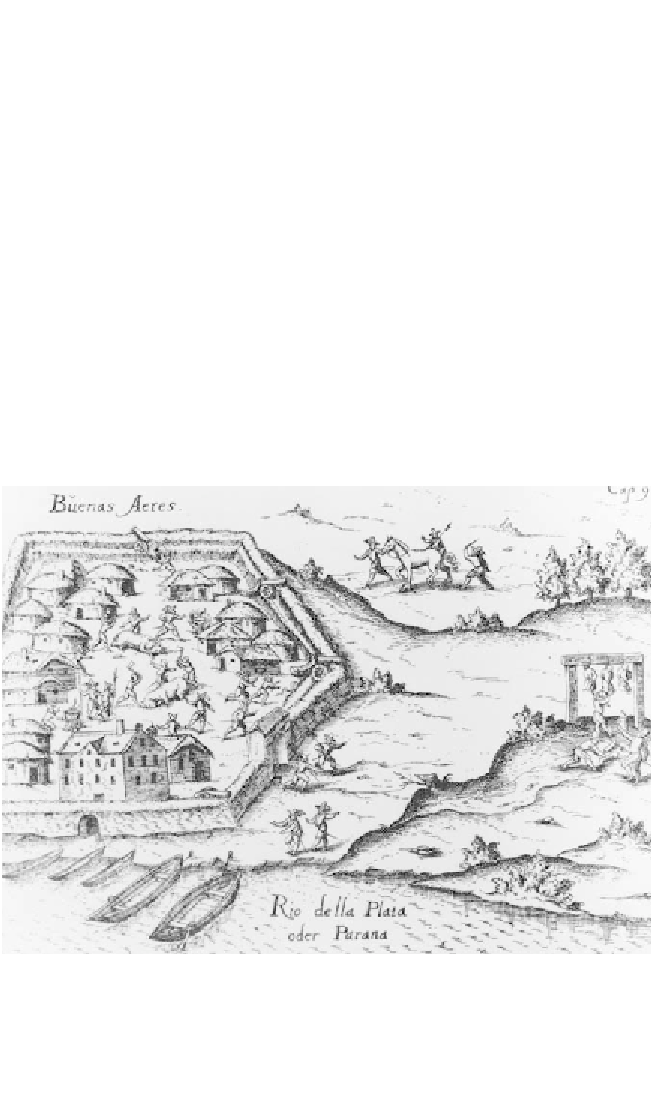Travel Reference
In-Depth Information
Vespucci. Thus the so-called New World came to be known as North
and South America.
European cartographers first began to fill in the contours of south-
ern South America on their sailing charts following the 1516 discov-
ery of the estuary of the Río de la Plata by the navigator Juan Díaz
de Solís. Early explorers of the region waded ashore in the estuary
and explored the Paraná River, where they traded with the natives
for objects made of silver. The Europeans referred to the peoples they
encountered in the New World by the generic term
indios,
or
Indians,
which derived from Columbus's initial mistake in believing he had
reached Asia, calling the place “las Indias,” or “the Indies.” This
strange, erroneous nomenclature has been perpetuated by Europeans
and their descendants ever since.
Explorers in the Río de la Plata region quickly learned that the source
of these objects in precious metals came from the great Inca Empire
to the west. Hence, the estuary and the entire region came to acquire
A depiction of the fractious and chaotic first Spanish settlement at Buenos Aires, around 1536.
Note the macabre scene of execution and mutilation on the outskirts of the settlement. Hunger
and the lack of indigenous surplus to plunder set the Spaniards to fight among themselves.
They slaughtered their own horses and left themselves vulnerable to the attack of indigenous
warriors.
(Ulrich Schmidel, 1891, courtesy Emece Editores)



